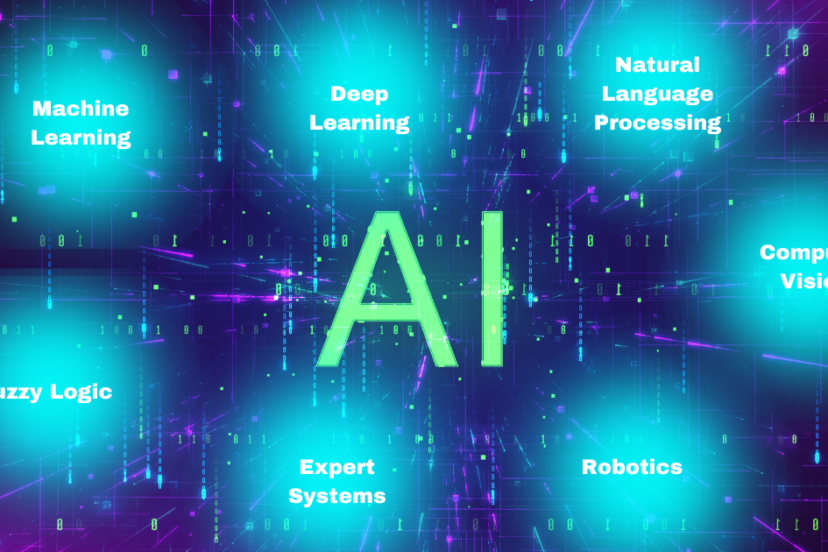Artificial Intelligence Branches
AI has become an integral part of our modern society, powering everything from virtual assistants to autonomous vehicles. But what exactly are the different Artificial Intelligence Branches and how do they contribute to its vast capabilities? Join us as we unravel the complexities of AI, discuss its real-world applications, delve into ethical considerations, and explore the exciting career opportunities it presents. Whether you’re a beginner or an expert in the field, there’s something here for everyone.
So grab a cup of coffee, sit back, and let’s embark on this journey into the world of Artificial Intelligence branches together!
Introduction to Artificial Intelligence Branches
AI branches refer to specialized areas within the broader field of artificial intelligence. These branches are dedicated to solving specific problems and achieving particular goals using advanced algorithms and computational techniques. They have the potential to revolutionize industries, enhance productivity, and solve complex problems by automating tasks, providing insights from data, and enabling machines to interact intelligently with the world.
Different Artificial Intelligence Branches
1. Machine Learning
Machine learning is a subset of artificial intelligence that focuses on the development of algorithms capable of learning from and making predictions or decisions based on data. It involves the study of statistical models and algorithms that enable computers to perform tasks without explicit instructions.
There are three main types of machine learning: supervised learning, unsupervised learning, and reinforcement learning. Supervised learning involves training a model on labeled data, unsupervised learning deals with unlabeled data, and reinforcement learning uses a system of rewards and punishments to train algorithms.
Applications and Examples of Machine Learning
Machine learning finds applications in various fields, including predictive analytics, natural language processing, image recognition, and autonomous vehicles. Examples include recommendation systems, spam filtering, and medical diagnosis.
2. Deep Learning/ Neural Networks
Deep learning is a subset of machine learning that focuses on the development of artificial neural networks capable of learning from large amounts of data. It involves the use of multiple layers of interconnected nodes, or neurons, to extract features and make predictions.
Neural networks are computational models inspired by the structure and function of the human brain. They consist of interconnected nodes organized into layers, including input, hidden, and output layers. Deep neural networks, with many hidden layers, are capable of learning complex patterns and representations.
Deep Learning Applications
Deep learning has revolutionized fields such as computer vision, natural language processing, and speech recognition. Applications include image classification, language translation, autonomous driving, and virtual assistants.
3. Natural Language Processing (NLP)
Natural language processing is a branch of artificial intelligence that focuses on the interaction between computers and human language. It involves the development of algorithms and techniques to enable computers to understand, interpret, and generate human language.
NLP techniques include tokenization, parsing, sentiment analysis, and named entity recognition. Algorithms such as recurrent neural networks (RNNs) and transformers are commonly used in NLP tasks.
NLP Applications
NLP finds applications in virtual assistants, chatbots, machine translation, sentiment analysis, and information extraction. Examples include Google Assistant, Amazon Alexa, and language translation services.
4. Computer Vision
Computer Vision involves enabling computers to interpret and understand the visual world. It focuses on developing algorithms that can analyze and extract information from images or videos. Computer Vision applications include facial recognition, object detection and tracking, medical image analysis, and autonomous vehicle navigation. By providing machines with the ability to “see,” computer vision enhances automation, safety, and efficiency in tasks that require visual understanding.
Applications in Various Industries
Computer vision has diverse applications across industries, including autonomous vehicles, healthcare, retail, surveillance, and agriculture. Examples include facial recognition systems, medical image analysis, and quality control in manufacturing.
5. Robotics
Robotics is a branch of artificial intelligence that focuses on the design, construction, operation, and use of robots to perform tasks autonomously or semi-autonomously. It involves a multidisciplinary approach, combining aspects of mechanical engineering, electrical engineering, and computer science.
Robots can be classified into various types based on their capabilities and applications, including industrial robots, service robots, humanoid robots, and medical robots. Each type has specific functionalities and use cases.
Robotic Applications
Robotics finds applications in manufacturing, healthcare, logistics, agriculture, and space exploration. Examples include industrial automation, surgical robots, warehouse robots, and planetary rovers.
6. Expert Systems
Expert systems are a branch of artificial intelligence that focuses on developing computer systems capable of mimicking the decision-making abilities of human experts in specific domains. They rely on knowledge representation, inference mechanisms, and problem-solving techniques.
Components of Expert Systems
Expert systems consist of knowledge bases, inference engines, and user interfaces. The knowledge base contains domain-specific information and rules, the inference engine applies logical reasoning to make decisions, and the user interface allows interaction with the system.
7. Fuzzy Logic:
Fuzzy Logic is a computational approach that handles uncertainty and imprecision in data by allowing for degrees of truth rather than strict binary values (true or false). It extends traditional logic to represent and reason with vague or ambiguous information more effectively.
Application of Fuzzy Logic
Fuzzy Logic finds applications in control systems, where precise mathematical models may be challenging to develop due to uncertain or variable conditions. By enabling machines to make decisions based on fuzzy rules and linguistic variables, fuzzy logic contributes to the development of intelligent systems capable of handling real-world complexities.
Conclusion
As we come to the end of our journey exploring the various branches of Artificial Intelligence, it’s clear that AI is reshaping our world in profound ways. From Machine Learning and Deep Learning to Robotics and Natural Language Processing, each branch offers unique opportunities and challenges.
Remember, the world of AI is ever-evolving, and staying informed is the key to unlocking its limitless potential. So, as we conclude, we invite you to continue exploring, asking questions, and embracing the exciting possibilities that Artificial Intelligence brings to our rapidly changing world.
Thank you for joining us on this adventure, and until next time – stay curious, stay inspired, and stay connected with the incredible world of AI!
FAQs
What are the main differences between machine learning and deep learning? Machine learning involves the development of algorithms that learn from data and make predictions, while deep learning focuses on neural networks with multiple layers for learning complex patterns.
How is natural language processing (NLP) used in everyday applications? NLP is used in virtual assistants, chatbots, language translation services, sentiment analysis tools, and information retrieval systems.
What are some ethical considerations in the development of AI technologies? Ethical considerations in AI development include fairness, accountability, transparency, privacy, bias mitigation, and societal impact assessment.
What are the potential risks associated with the widespread adoption of AI? Risks associated with AI adoption include job displacement, algorithmic bias, privacy violations, security breaches, and misuse of AI-powered technologies.
What are some emerging trends in AI that are expected to shape the future? Emerging trends in AI include autonomous systems, explainable AI, quantum computing, federated learning, and synthetic data generation.




